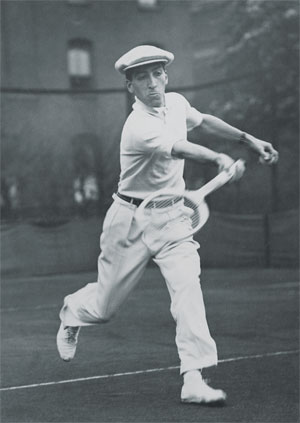In praise of the polo shirt

Simply sign up to the Life & Arts myFT Digest -- delivered directly to your inbox.
As the end of the summer tennis season looms with the US Open later this month, and executives prepare for their August holidays, a man’s thoughts turn to the garment that links the two: René Lacoste’s polo shirt, the top that not only revolutionised tennis attire but became one of the foundations of the modern male wardrobe.
A perennial inventor, Lacoste patented new forms of tennis balls right up until the day he died in 1996. Back in 1933, he came up with a loose, soft-collared shirt for players made out of a piqué cotton, with a long tail that stayed tucked into the trousers. Today the polo shirt is enjoying something of a renaissance. However, these are not the polos of Lacoste’s time, which tended to be loose and baggy (the better to hit a tennis ball in). Rather, these are Polo 2.0, with a slimmer and smarter aesthetic.
John Smedley is modernising its traditional knit version; Trussardi and Canali are presenting the polo shirt as a summer staple (Trussardi); Ralph Lauren has relaunched its ubiquitous model; Brunello Cucinelli has slim-fitting polos that would dress up most men on dress-down Friday; and Topman has a new Lux line that includes slim knitted polo shirts.
And Lacoste itself has created a range of polos to celebrate the 80th anniversary of its founder’s invention, in white and navy with subtle detailing, along with 12 limited-edition shirts available live on Facebook on the first of every month.
“My wife never liked polo shirts, she always thought they were too shapeless,” says James Bronowski, a PR executive working in Mayfair. “But I bought two from Orlebar Brown last year to take on my honeymoon, and their smarter look made them perfect for the beach and the bar afterwards.”

Adam Brown, founder of Orlebar Brown, comments: “Our first move was to smarten up men’s swimming shorts; more recently we’ve moved on to polo shirts.” The slimmer fit and lack of a long tail are the most obvious updates. But more important are the subtle improvements such as a two-piece collar – with the same construction as a dress shirt – which gives the polo a more formal look.
Some brands have gone further, exploring a knitted alternative to the polo’s traditional woven cotton fabric. In its spring/summer 2013 ranges, Trussardi is offering knitted polos in brown and mustard (£338) while Canali’s best is in steel grey (£270). The advantage of a knitted, fine-gauge polo, as opposed to cotton, is that it can hold its shape and incorporate formal tailoring elements, such as backward-sloping shoulder seams.
The material is what differentiates polo shirts from T-shirts; John Smedley, the company that pioneered knitted polos back in the 1930s, still sells one of its original models, Isis, which has the floppy, loose-fitting characteristics of the time. This season Smedley has also launched a new model, Adrian (£115), with a much neater fit, that has already become one of their bestsellers.
“I’ve always worn Smedley’s long-sleeved polo shirts, such as the Dorset, as the step-down from a shirt and jacket,” says Ali Jawad, a magazine publisher in London. “The summer cotton versions are just as smart – more like knitwear than sportswear.”
——————————————-
Comments